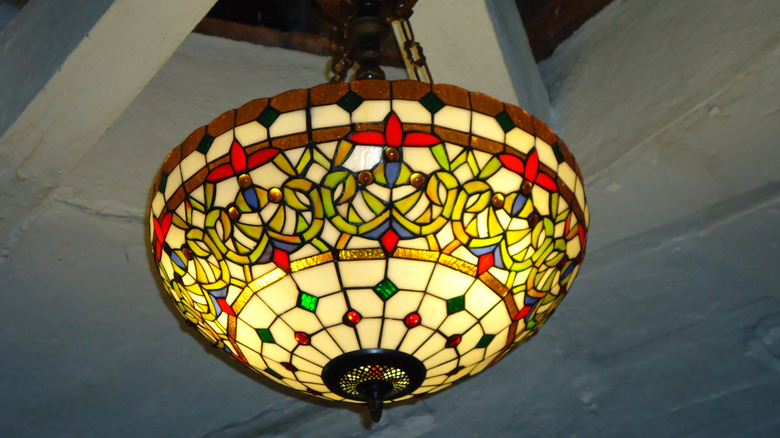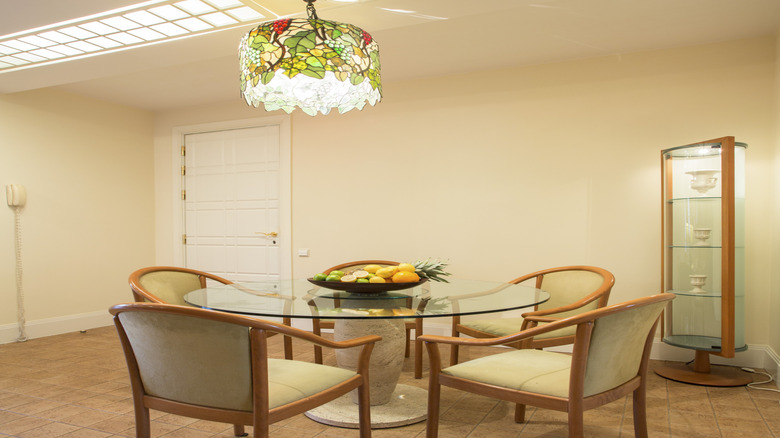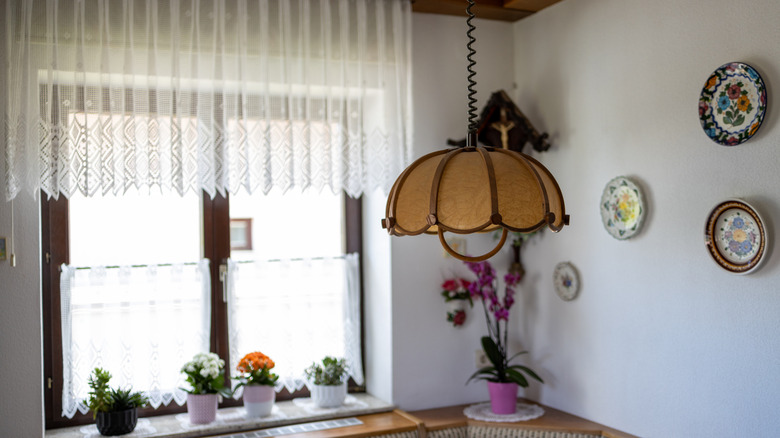How To Select The Right Stained Glass Chandelier For Your Kitchen
Stained glass chandeliers provide a soft glow in your kitchen, bouncing an array of light across the space to create a dazzling effect. Homeowners looking to invite more color and personality to their spaces may find that a stained glass chandelier can be the perfect focal point or statement piece that helps tie together the color palette or design aesthetic. However, finding the right stained glass chandelier can be tricky. After all, with so many colors, styles, patterns, and metallic touches, there is plenty of room for error when it comes to blending these fixtures with an existing design. To avoid the mistakes everyone makes when buying a chandelier, you'll need to nail your design goals before purchasing the perfect piece.
Considerations like hue, scale, design style, and illumination should be accounted for prior to making your purchase. It's important to match the chandelier to your own personal style as well as make sure it fits the overall aesthetic of the room. The last thing you need is for a once-trendy lighting choice to become beyond outdated in your current design scheme. While stained glass chandeliers are elegant, luxe, and exude a rich sense of history, it can be tricky to incorporate them into a modern kitchen without feeling tacky or overwhelming.
Match the chandelier to your design style or desired aesthetic
The best way to incorporate a stained glass chandelier seamlessly into your kitchen is to match the piece to your existing or desired design style. With so much variety to choose from, many stained glass chandeliers can effortlessly integrate into your home. To match it to your space, consider your color palette, metal accent tones, overall design style, and the size of your room. Start with the color. It's best to choose a statement piece that blends with your current or desired palette. For example, if you have soft blues or gray tones, choose a blue stained glass chandelier over a bright red one. Or, if you're craving more color in a neutral space, consider picking a stained glass piece with a few pops of color.
Next, be sure to choose a chandelier that matches your existing metallics. Look to your fixtures and hardware to get an idea of what metal would best match the space. If you have a bronze faucet and brushed-bronze door handles, a bronze metal frame on your chandelier could look great. Of course, you can mix metals if you want, just be sure it feels intentional and not overlooked. If you're struggling to source a chandelier with the right color or metallic tone, you can give an old chandelier new life with a color swap by using alcohol ink and heat or metallic Rub 'n Buff.
What not to do when styling a chandelier in your kitchen
When choosing a kitchen stained glass chandelier, consider the scale. The chandelier's design style will be the key to nailing the sizing. For example, rustic chandeliers tend to be quite large, sometimes made of a wagon wheel, compared to mid-century modern aesthetics, which could feature smaller fixtures like a Sputnik chandelier, instead. If your home leans more minimal design-wise, you'll also want to avoid overly ornate or traditional chandelier aesthetics that could look out of place. On the other hand, a small chandelier in a large vaulted room could feel lackluster.
Your chandelier should feel appropriately sized for the space. A simple trick to help you navigate appropriate sizing is to measure the length and width of your room and then add those two numbers together to get the width in inches of the proper chandelier. For example, the average kitchen size in newly-built homes measures roughly 13 feet by 13 feet. Add these numbers together to get 26. Now you know you'll want to find a chandelier that is no more than 26 inches wide for the space. This is a rough estimate, and depending on the scope and design of your room, you could alter this measurement.
Additionally, routine maintenance is best for preserving your stained glass fixture. Dust it regularly and occasionally clean it with gentle soap and water to prevent discoloration or faded lighting. Also, avoid using harsh chemicals, which could damage the stained glass.


